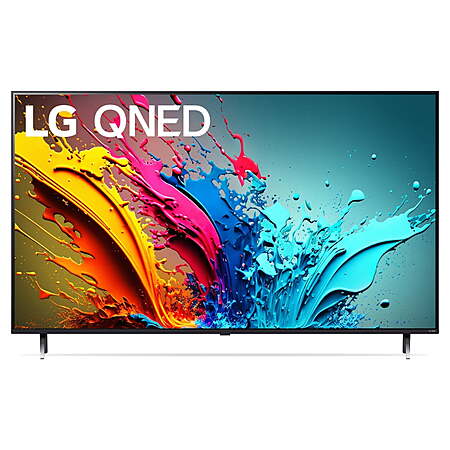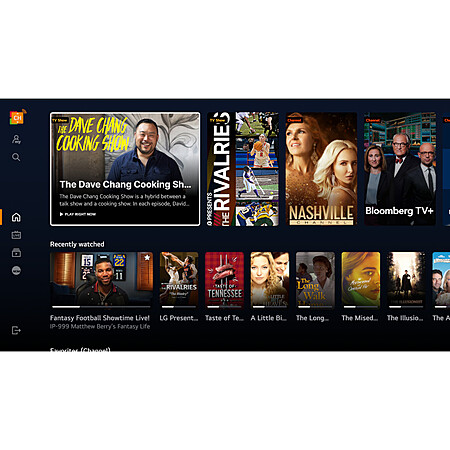expirediconian | Staff posted Jan 22, 2025 04:09 PM
Item 1 of 2
Item 1 of 2
expirediconian | Staff posted Jan 22, 2025 04:09 PM
55” LG QNED85T 4K UHD QNED Web OS Smart TV
+ Free Shipping$500
$747
33% offWalmart
Visit WalmartGood Deal
Bad Deal
Save
Share




Leave a Comment
Top Comments
- OLED displays are composed of various tiny organic structures that emit light when given an electrical charge. Turn off the charge and it emits 0 light and looks to be inky black. Different kinds of structures produce different colors, the traditional red, green, and blue.
- QD-OLEDs fix a problem with that last part: Different structures also produce different amounts of light and wear out at different times. Rather than having to tinker with the combination of structures, QD-OLEDs just use "blue" structures for everything and sticks a particular type of crystal ("quantum dots") in front to allow for the RGB: Some crystals will emit red light when struck by blue light, while other crystals emit green light instead. These crystals are more durable than the organic structures that they replace, and now you can increase the brightness of the blue structures across the board because you don't have to worry about some colors wearing out faster than others.
- QNED goes back to the technology that we've had since the beginning of LCD flatscreen TVs: Instead of organic structures that emit light on their own, you use crystals that block or allow light to pass through them, with the light coming from a backlight. While not quite as cheap as the original LCD TVs, they're cheaper than OLED and QD-OLED displays since manufacturers have the fundamental tech down pat after so many decades. Here the goal of the filter crystals is to only let blue light through, which in turn hit quantum dots (like in QD-OLEDs). The color and contrast is better than original LCD TVs; however, since the light source isn't at the pixel-level like OLEDs (dimming zones, mini LEDs, etc) QNEDs aren't as good on those points compared to OLEDs.
9 Comments
Sign up for a Slickdeals account to remove this ad.
Our community has rated this post as helpful. If you agree, why not thank LtEven
- OLED displays are composed of various tiny organic structures that emit light when given an electrical charge. Turn off the charge and it emits 0 light and looks to be inky black. Different kinds of structures produce different colors, the traditional red, green, and blue.
- QD-OLEDs fix a problem with that last part: Different structures also produce different amounts of light and wear out at different times. Rather than having to tinker with the combination of structures, QD-OLEDs just use "blue" structures for everything and sticks a particular type of crystal ("quantum dots") in front to allow for the RGB: Some crystals will emit red light when struck by blue light, while other crystals emit green light instead. These crystals are more durable than the organic structures that they replace, and now you can increase the brightness of the blue structures across the board because you don't have to worry about some colors wearing out faster than others.
- QNED goes back to the technology that we've had since the beginning of LCD flatscreen TVs: Instead of organic structures that emit light on their own, you use crystals that block or allow light to pass through them, with the light coming from a backlight. While not quite as cheap as the original LCD TVs, they're cheaper than OLED and QD-OLED displays since manufacturers have the fundamental tech down pat after so many decades. Here the goal of the filter crystals is to only let blue light through, which in turn hit quantum dots (like in QD-OLEDs). The color and contrast is better than original LCD TVs; however, since the light source isn't at the pixel-level like OLEDs (dimming zones, mini LEDs, etc) QNEDs aren't as good on those points compared to OLEDs.
Well neither, those terms refer to different things - you can have a QNED display with mini-LED backlight. In fact, that's exactly what the older 2023 version of this model had. But this newer model is actually a downgrade - it's edge-lit instead of mini-LED.
Sign up for a Slickdeals account to remove this ad.
"It has HDMI 2.1 bandwidth on all four of its ports for up to 4k @ 120Hz gaming with VRR, so it's fully compatible with modern gaming consoles."
Leave a Comment